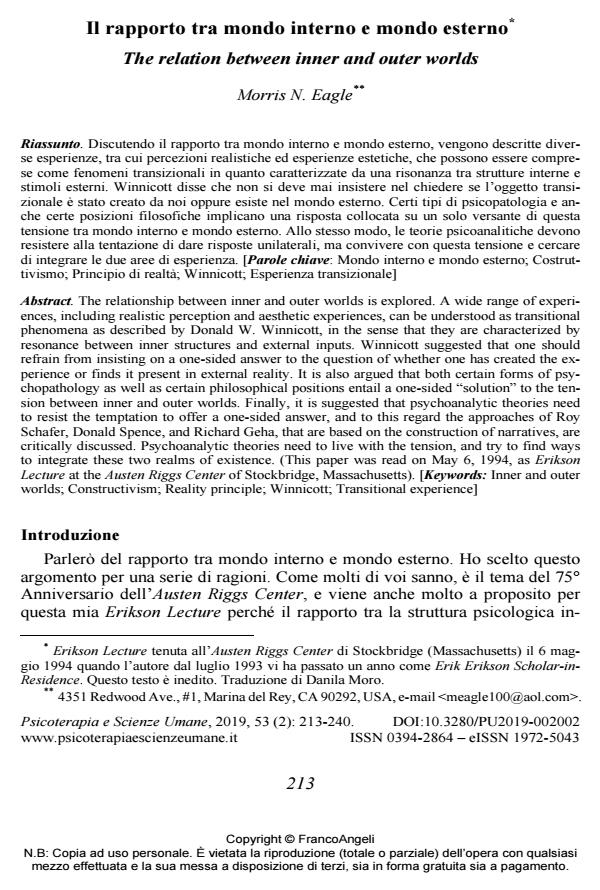The relation between inner and outer worlds
Journal title PSICOTERAPIA E SCIENZE UMANE
Author/s Morris N. Eagle
Publishing Year 2019 Issue 2019/2
Language Italian Pages 28 P. 213-240 File size 112 KB
DOI 10.3280/PU2019-002002
DOI is like a bar code for intellectual property: to have more infomation
click here
Below, you can see the article first page
If you want to buy this article in PDF format, you can do it, following the instructions to buy download credits

FrancoAngeli is member of Publishers International Linking Association, Inc (PILA), a not-for-profit association which run the CrossRef service enabling links to and from online scholarly content.
Abstract. The relationship between inner and outer worlds is explored. A wide range of experiences, including realistic perception and aesthetic experiences, can be understood as transitional phenomena as described by Donald W. Winnicott, in the sense that they are characterized by resonance between inner structures and external inputs. Winnicott suggested that one should refrain from insisting on a one-sided answer to the question of whether one has created the experience or finds it present in external reality. It is also argued that both certain forms of psychopathology as well as certain philosophical positions entail a one-sided "solution" to the tension between inner and outer worlds. Finally, it is suggested that psychoanalytic theories need to resist the temptation to offer a one-sided answer, and to this regard the approaches of Roy Schafer, Donald Spence, and Richard Geha, that are based on the construction of narratives, are critically discussed. Psychoanalytic theories need to live with the tension, and try to find ways to integrate these two realms of existence. (This paper was read on May 6, 1994, as Erikson Lecture at the Austen Riggs Center of Stockbridge, Massachusetts).
Keywords: Inner and outer worlds; Constructivism; Reality principle; Winnicott; Transitional experience
Morris N. Eagle, Il rapporto tra mondo interno e mondo esterno in "PSICOTERAPIA E SCIENZE UMANE" 2/2019, pp 213-240, DOI: 10.3280/PU2019-002002